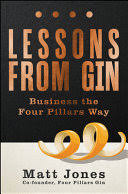Advancing Sustainability: The Rise of Recyclable Flow Control Solutions
Flow control valves represent innovation, consumer satisfaction and sustainability.

Image courtesy of Aptar.
It’s been said that “the most important ability is availability.” But as far as sustainability is concerned, some adage adjustments may be in order.
Why? Because, for brand owners incorporating sustainable solutions, the most crucial ability is “adaptability.” Designing and manufacturing products that contribute to a circular economy is one thing; creating solutions that address these needs while performing just as well as their predecessors is quite another.
So it is with packaging – especially, certain packaging components. While producing a plastic bottle or flexible pouch from PCR (post consumer recycled) content or a more recyclable resin is necessary and admirable, historically it’s been a far easier lift than doing so with dispensing closures, which require polymer portfolio expertise to develop and manufacture with recyclable resins.
The same could be said for precision dispensing solutions, such as flow control valves. Today, many solutions in the market that address sustainability end up sacrificing functionality and consumer experience for the sake of eco-friendliness. This limits consumer adoption of sustainable packaging as brand owners know now more than ever, consumer expectations are for clean, convenient, functional and safe packaging – “just okay” isn’t good enough.
The Values of Valves
When it comes to customer perception and shelf appeal, dispensing solutions are viewed collectively with every other packaging detail – from the shape of the bottle and cap to the design on the label, and, of course, the product inside. Each of these elements contribute to the consumers’ experience and perception of the brand; conversely, brand integrity can be compromised if just one component does not meet their standards and needs.
Among the many advantages valves have to offer, convenience, cleanliness and control are paramount. Elastomeric flow control valves are meticulously engineered and manufactured to deliver clean, controlled and repeatable performance throughout the package's lifespan. This results in clean dispensing that avoids drips, leaks or spills during product use, ensuring a positive experience for consumers. Plus, valves minimize product exposure to external elements and help safeguard product integrity. Given the perpetual (and well-placed) consumer emphasis on hygiene and product safety, guaranteeing cleanliness and a tidy consumer experience inevitably cultivates brand loyalty.
Additionally, the use of flow control valves in dispensing closures with inverted packaging embodies a commitment to preventing product waste. From assuring cleanliness and precision to bolstering the loftier goals of product experience and brand reputation, valves serve as a linchpin of many modern packaging solutions, creating value and differentiation in competitive markets.
Likewise, in a world where every drop counts, precision is non-negotiable. Flow control valves in dispensing closures are designed to yield exemplary product flow control and consistent flow rate, ensuring users get precise amounts of product when and where they please. The exacting, clean-cut dispense that valves offer is not only appreciated by the consumer but also enhances consumer trust and satisfaction with the brand.
Beyond cleanliness and precision, quality in a flow control valve is key. Valves are a sophisticated dispensing system; their design and manufacturing process should require this elevated status. This means rigorous testing and adherence to stringent internationally recognized production protocols, each of which aims to ensure durability, functionality and compatibility with diverse applications across market segments, including food, beverage, personal care and home care.
Flow control valves enabled the inversion of squeeze-dispensed products. Valves opened the door for consumer appeal bolstered by the immediate availability of the product, each time they wish to use it. With the product bottom-side up, gravity pushes it toward the dispenser – meaning the product is ready to go when the consumer is. This convenient feature not only saves time but also enhances the overall user experience. Plus, inverted storage offers practical benefits by helping consumers effectively use the entirety of each package’s contents without the need for extensive scraping or tapping out the last little remnants. This not only reduces waste but also maximizes value for the consumer, ensuring that every last drop of the product is put to good use.
Flow control valves are also remarkably kid friendly. Consider the squeezable condiment bottles found on dining tables around the world. By integrating flow control valves into these bottles, manufacturers ensure that parents can confidently hand them over to their children without worrying about messy spills or excessive dispensing. Children can easily squeeze out just the right amount of ketchup or any condiment they need, making flow control valves a parent’s best friend.
Elevating Sustainability
Considering the lengthy list of responsibilities flow control valves undertake, it’s no wonder these intricate components have, historically, trailed other packaging container components in sustainability. Traditionally, recyclable elastomeric materials have been difficult to process to the functional and quality standards we set for ourselves, and which consumers have come to appreciate and expect.
Now, the technology and necessary expertise exists to create valves that significantly raise sustainability profiles for brands, while still offering precise and hygienic dispensing. Here, a critical factor is that high-performing flow control valves can now be manufactured to support mechanical recycling. When comprised of low-density thermoplastic elastomer (TPE), the valves float during the recycling sorting process, separating them from the polyethylene terephthalate (PET) stream. From there, they are recycled in the polypropylene (PP) and polyethylene (PE) stream. When assembled into a compatible closure, these sustainable valves create a fully recyclable solution for use with PET, PE or PP containers.
Such innovations help brand owners not only align with their own corporate sustainability initiatives, but also enable them to meet regulatory requirements, including those outlined in the EU's Packaging & Packaging Waste Regulation (PPWR). By embracing recyclability by design, brands demonstrate their commitment to environmental stewardship and responsible resource management, while also catering to the evolving expectations of environmentally conscious consumers.
Further, brands now possess the capacity to customize their recyclable valve technology through valve product evaluation tests. In these assessments, food and beverage and personal care companies can submit their product and packaging to valve manufacturers to determine the optimal valve size and slit configuration for the specific product being considered. These tests are conducted prior to the product's release to store shelves, guaranteeing the highest level of performance and suitability for consumers' needs. This capability allows for the customization of valve solutions tailored to the unique requirements of each product, ensuring optimal functionality and consumer satisfaction.
The benefits and value of flow control valves extend far beyond mechanical functionalities; they represent a commitment to innovation, consumer satisfaction, and – now – sustainability. Throughout various industries, these superior solutions have been indispensable tools toward elevating product experiences and driving brand loyalty for decades. Promisingly, materials science has advanced to a place where brand owners can bolster their sustainability goals without sacrificing dispensing performance – a best of both worlds that benefits both consumers and the planet.Looking for a reprint of this article?
From high-res PDFs to custom plaques, order your copy today!









